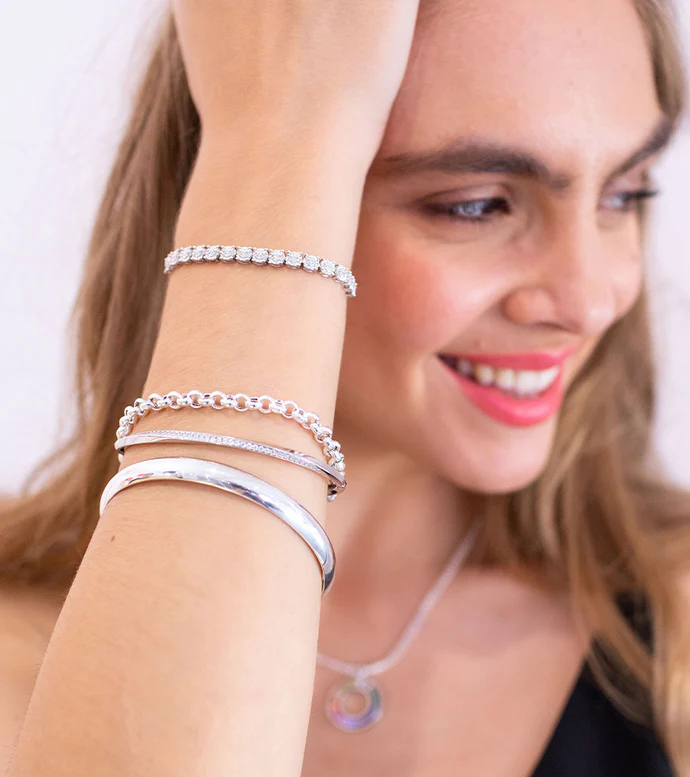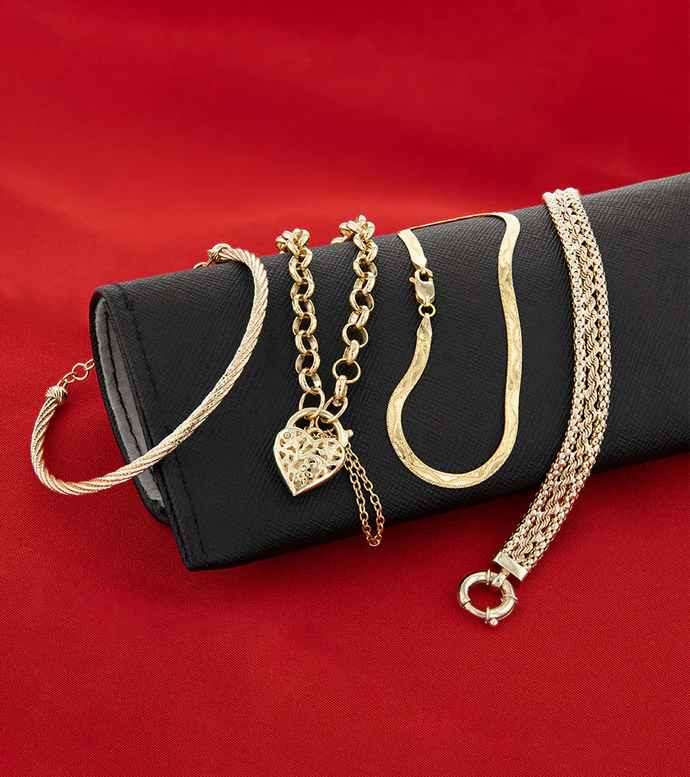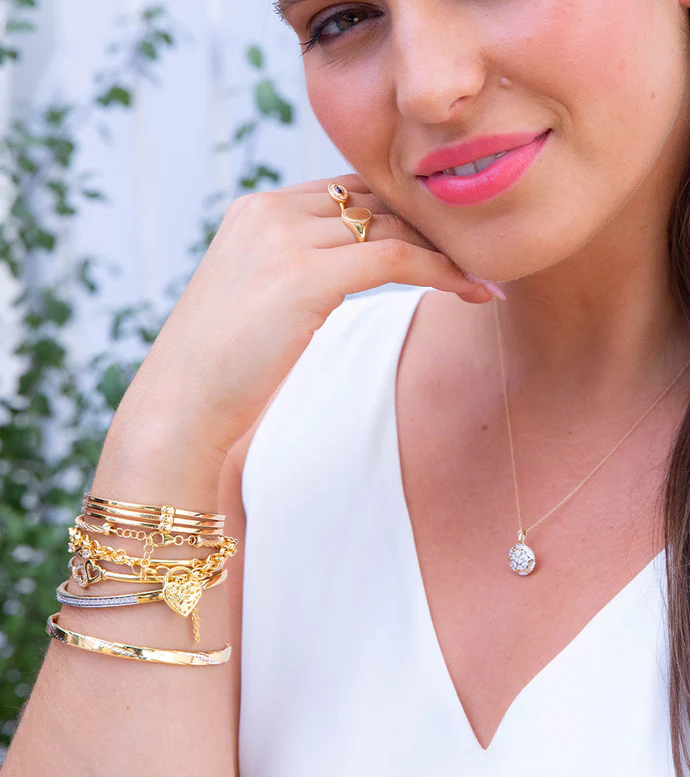Bracelets Care Guide
Bracelets are some of our favourite jewellery styles because of their versatility and range of designs. However, proper care and maintenance of your bracelets are essential for preserving its beauty and ensuring longevity. By looking after your bracelets, you can avoid damage, maintain its shine and enjoy wearing your bracelets for many years to come.
There are many benefits to practising even the most basic silver bracelet or gold bracelet care such as longevity and appearance. Not only this, but by keeping your bracelets in good condition, you can help to keep its value over time, especially if it is made from gemstones such as diamond or precious metals like gold. Additionally, if you have bracelets that hold a close sentimental value to you, then properly caring for it will mean that you can hand it down through the generations.
Before you begin caring for your bracelet, you will need to find out the style and materials that it is made from, as this will determine your best course of action. Metal bracelets are mostly made from gold, silver or stainless steel - including plated jewellery too. It’s important that you know whether your bracelet is gold-plated to know how best to look after it. Moreover, bracelets that feature gemstones such as diamonds, rubies, emeralds, sapphire, amethyst or another precious or semi-precious stone may require specific care considerations due to variations in hardness and sensitivity to chemicals.

HOW TO CLEAN BRACELETS
METAL BRACELETS
To clean metal bracelets, you will need to prepare a cleaning collusion by mixing warm water with a few drops of mild dish soap or jewellery cleaner. Gently scrub the bracelet with a soft bristle toothbrush, paying close attention to the intricate nooks and crevices - especially hard to reach areas. Once you have scrubbed the bracelet well, rinse the bracelet under warm running water to remove any soap residue. Pat the bracelet dry with a soft, lint-free cloth and ensure that it is completely dry before storing or wearing it.
GEMSTONE BRACELETS
For bracelets that have gemstones, you may want to check if there are any specific cleaning instructions as some stones will be sensitive to certain cleaning agents. In general, always clean stones with a soft cloth to avoid scratching it.
BEADED BRACELETS
Beaded bracelets may seem harder to clean because of their design, however, do not worry! Begin by cleaning with a soft cloth to wipe away debris or dirt. Be cautious when cleaning delicate or porous beads and avoid using excessive water or harsh cleaning solutions as that may damage the beads. For very stubborn dirt, you can use a small brush or very soft toothbrush to gently get in between the beads. Pat the bracelet dry with a soft cloth and allow it to air dry completely before wearing or storing.

STORAGE
Consider investing in a nice jewellery box with separate compartments or dividers specifically designed for bracelets. This allows you to store each bracelet individually, preventing them from getting tangled with another. Look for boxes that have cushioned interiors or soft lining to protect the bracelets from scratches.
Alternatively, you could get a jewellery stand or display is a great option for showcasing your bracelets while keeping them organised. Look for stands with multiple tiers or hooks to hang the bracelets. This not only provides easy access to your collection but also prevents them from tangling.

WHEN NOT TO WEAR BRACELETS
Even though bracelets can be a stylish accessory for various occasions, there are a few situations when it may be best to refrain from wearing them. It’s best to remove your bracelets when engaging in physical activities, sports or workouts. This is because bracelets can get caught on equipment or clothing, which can cause the bracelet to damage.
It’s also advised that you avoid wearing bracelets while swimming or showering. Water can corrode certain metals or weaken the material and fast-track tarnishing. Along with this, take your bracelets off while you sleep. Bracelets with hard or bulky elements can cause discomfort or restrict blood circulation when your arm is under pressure against a pillow or mattress. Sleeping with bracelets on may also increase the chances of damaging them or causing unnecessary wear and tear.
If you have particularly delicate or valuable bracelets, it may be best to avoid wearing them in situations where they are more likely to be damaged. For example, if you're attending a crowded event, working in a hands-on environment, or participating in activities that could subject the bracelets to excessive force or impact.












